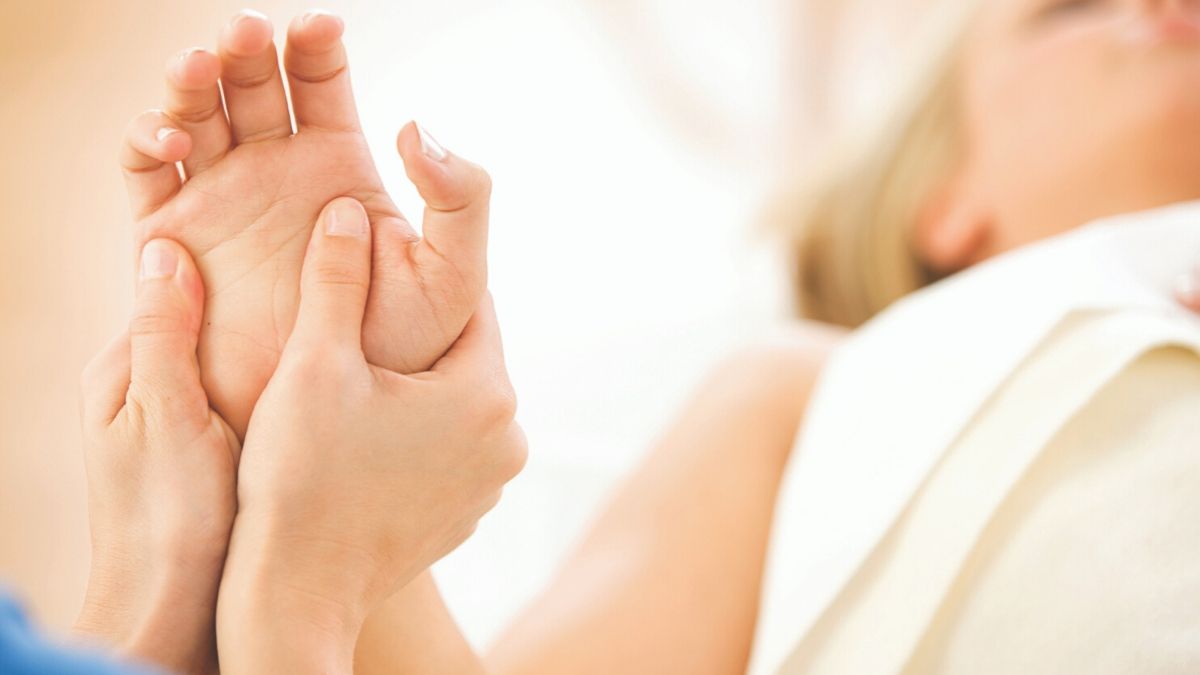Massage and Medical Treatments
Learn how massage therapy can be an important part of an integrative care approach when managing many common health issues.

A recent consumer study sponsored by AMTA indicates that 67 percent of individuals surveyed claim the primary reason for receiving their last massage in the previous 12 months was medical (41 percent) or stress (26 percent) related.
In addition, years of research support the efficacy of massage therapy for many medical treatments including a variety of health conditions such as cancer, arthritis, autoimmune disorders as well as maternity and newborn care.
Massage and Cancer
According to the Mayo Clinic, one in three patients undergoing cancer treatment experiences cancer-related pain. Pain may be the result of treatment, such as chemotherapy, radiation or surgery, or a symptom of cancer growth, which can destroy tissue and add pressure to nerves, bones, and organs.
Massage Therapy Benefits for Oncology Patients
Recent studies show massage therapy can be an important part of an integrative approach to care for cancer patients, providing the following benefits:
- Reducing pain
- Alleviating stress
- Relieving nausea
- Reducing depression and anxiety
- Improving sleep and lessening fatigue
- Preventing chemotherapy-induced peripheral neuropathy
With all of these benefits, it’s no doubt that massage can boost health-related quality of life for cancer patients. In addition, massage for cancer patients is recommended or supported for consideration by the American College of Physicians, The Joint Commission and the Federation of State Medical Boards.
Learn more about the benefits of massage for cancer patients
Massage for Arthritis
Millions of adults over the age of 50 live with arthritis. The condition commonly affects one or more of the following body parts: hands, spine, hips, and knees.
Osteoarthritis
Osteoarthritis is the most common type of arthritis, and it causes pain, swelling, and stiffness in the joints by breaking down the slippery tissue covering the end of the bones. Recent research indicates that 60-minute sessions of Swedish massage once a week for those with osteoarthritis of the knee significantly reduced their pain.
Rheumatoid Arthritis
Rheumatoid Arthritis is the second most common form of arthritis, causing damage to the linings of the joints resulting in pain, swelling, and stiffness. Studies show that receiving regular massage therapy for a four-week period, can decrease pain, improve grip strength and range of motion in wrists and large upper joints in adults with rheumatoid arthritis.
Explore how massage can make a difference for arthritis patients
Massage for Autoimmune Disorders
Over 80 autoimmune diseases affect more than 23.5 million Americans, making them among the most prevalent diseases in the country. They can affect any part of the body, and disproportionately affect more women than men—in fact, according to the American Autoimmune Related Disease Association, 75 percent of Americans with an autoimmune disease are women.
One of the key benefits of massage therapy for those suffering from autoimmune disorders is to provide non-pharmaceutical pain relief. Massage can also help by reducing stress, alleviating anxiety and depression, and improving sleep. To make the most impact, massage therapists need to fully understand the symptoms, the source of flares as well as the cautions and contraindications.
Massage Therapy Journal: Massage Therapy and Autoimmune Disorders
Massage for Maternity and Newborn Care
Pregnancy often brings life transitions and a new set of challenges. During this time, women experience anatomical, physiological and psychological changes.
Knowing how massage therapy best benefits women who are pregnant – as well as the cautions and contraindications that will help guide every massage therapy session – is necessary for massage therapists who want to work with these clients.
Recent research suggests massage therapy may provide benefits throughout a women’s pregnancy, as well as during labor, childbirth and post-partum. Prenatal massage can help alleviate the following:
- Back pain during pregnancy
- Labor pain during childbirth (helping increase a women’s sense of control)
- Postoperative pain, anxiety, and stress
Massage therapy has also been shown to play a critical role in newborn care. Clinical trials indicate that infants born to mothers who had massage therapy had lower cortisol levels, better neonatal outcomes and fewer incidences of low birth weight and prematurity.
In addition, emerging models of care for infants with mild or moderate NAS (Neonatal Abstinence Syndrome) recommend massage therapy as a part of nonpharmacological approach for managing the condition.
Related Resources
Massage for Arthritis
In this video course, explore research on the effects of massage therapy as a stand-alone treatment for pain and functional outcomes for arthritis.
Massage and Integrative Health Care
Learn more about how massage can be an important part of an integrative approach to health care.